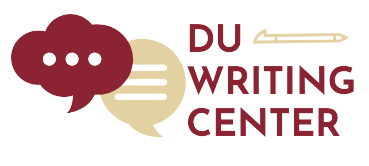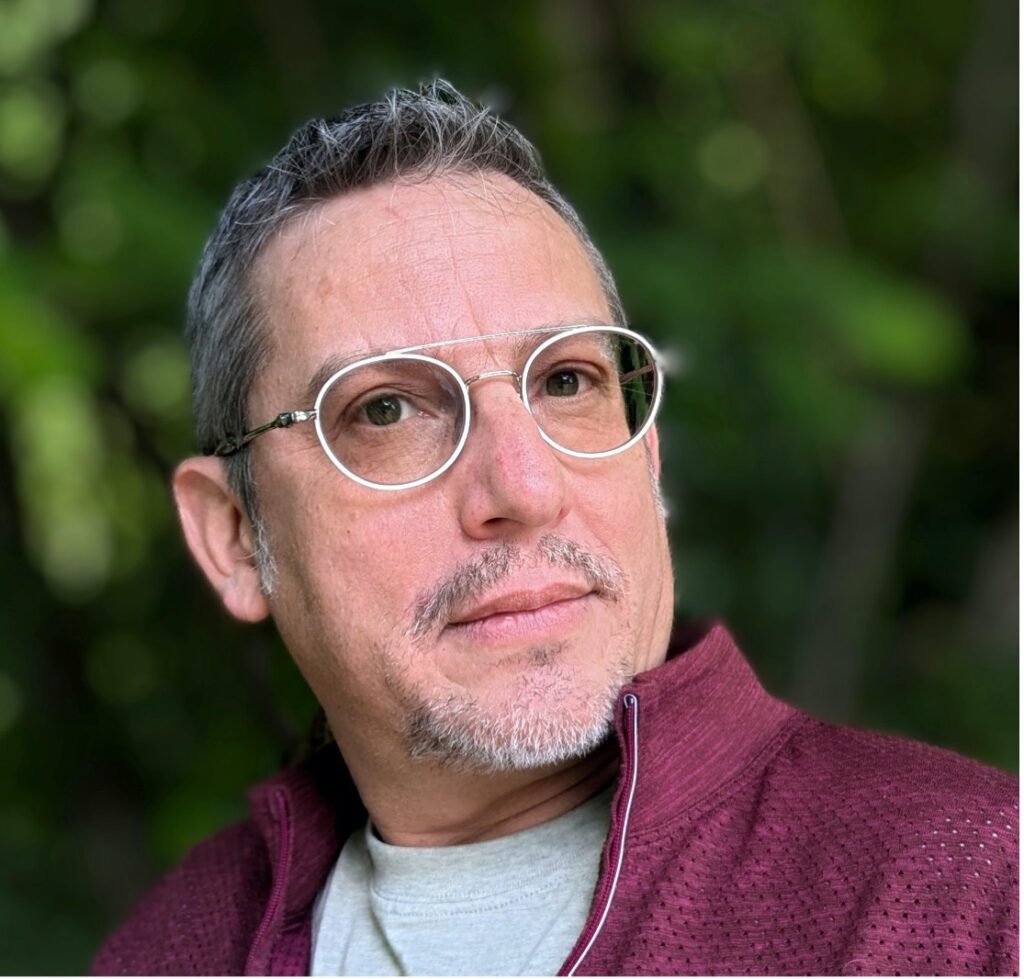Photo Credit: Lia Suissa
By Kamila Kinyon
This Spring we will be publishing a series of spotlight articles about multilingual students and faculty at DU. These articles are based on interviews that Dr. Kamila Kinyon and a group of multilingual students conducted about interviewees’ lived experiences, including continuing connection to heritage languages, role as writers and teachers at DU, and thoughts about multilingual and multicultural identity. This project is funded by a Faculty Research Fund Grant awarded to Dr. Kinyon for 2023-25. We welcome this opportunity to celebrate DU’s multilingual community.
Hebrew has played an important part in the life and work of Professor Adam Rovner, director of the Center for Judaic Studies at DU. Raised in South Jersey and Pennsylvania by English speaking parents, Adam learned biblical, liturgical Hebrew in a Jewish school that he attended till second grade. He learned to speak modern Hebrew during a gap year between high school and college when he lived on a kibbutz and then continued his connection to the language when pursuing his master’s degree at the Hebrew University of Jerusalem, where he studied comparative literature. Adam and his wife, who grew up speaking Hebrew in Israel, decided to speak Hebrew only when raising their daughter. He notes: “It was in fact her mother tongue, we did not speak English to her at all.” Overall, Adam’s uses of Hebrew range from interactions with family and friends to conducting research, writing books, and working with students.
Adam characterizes Hebrew as “the language of rabbinic commentaries and the language of much of the liturgy. It was primarily an academic language, we could say something like Latin…It was only revived in the late 19th century as a spoken language, as a modern tongue. Some people say it’s not a revival. Some people say it’s really a constructed language.”
In-depth knowledge of Hebrew in combination with some Yiddish were essential to Adam for conducting research related to his first book In the Shadow of Zion. “A lot of the research was done with Hebrew sources, some of them primary sources, letters, government correspondence, official correspondence. Some of it was secondary sources, critical work in Hebrew. I also had to really get back in touch with some of my Yiddish knowledge.”
Hebrew is also central to Adam in his teaching. He has taught Hebrew literature both in Israel and in the U.S., where he has found that students tend to interpret it differently based on their backgrounds. In teaching Hebrew literature in translation in the U.S., Adam first reads the original, then explicitly addressing issues of translation with his students: “I want people to understand they’re reading a translation.” Importantly, Adam has found that based on their diverse linguistic and cultural knowledge, students in the U.S. tend to develop different interpretations of Hebrew literature than Israeli students responding to the same pieces. For example, when interpreting Shimon Ginzburg’s “In Praise of the Hebraists in America,” Israeli students “retroactively read the Holocaust into this poem that was written prior to the Holocaust.” Adam explains, “I think that’s because of the pervasive memory culture of the war against the Jews in Israel.”
Commenting on difficulties of translation, Adam notes that it is tricky to translate Hebrew literature into English due to key differences between the two languages. For instance, Hebrew is much more concise than English “A novel that is 500 pages in Hebrew is going to be 25 to 30% longer in English, there’s just more, you need more English words… so often novels in Hebrew that are longer are edited down.”
Adam will continue to use Hebrew extensively in working on a new book project, a non-fiction true crime story centering on a homicide in Israel in 1949. “I’m using the crime as a means of generating plot, tension, characters, but also that will expose elements of what was then in some ways homogenous society, but in many ways that concealed a number of fissures. Using Hebrew is essential because I’m reading the court transcript, which is, I don’t know, 500 pages long. And it’s all in Hebrew. And newspaper reports, they’re all in Hebrew.”
Adam stresses the importance of multilingualism to Jewish Studies and would ideally like to see two years of Hebrew, rather than just one, required for minors: “I think we would see an increase in students who persisted into a third year into a more advanced level. I think we would turn out stronger internationally minded students.” He characterizes modern Jewish society from the 19th century onward as inherently multilingual while many American Jews only know one language, English. “I believe that Hebrew is essential to contemporary Jewish Studies as an academic discipline. …Knowing different languages helps people to think differently, think better, to be more effective as scholars.” Adam acknowledges that other languages are also central to Jewish Studies including Yiddish, Judeo-Arabic, and Ladino. However, “finding people to teach some of those other languages is a lot more of a rarefied task. So Hebrew it is for now.”
Emphasizing the importance of multiple languages, Adam concludes: “I think people fall in love with different languages. You know, different languages and any language they add to their vocabulary, to their worldview, to their understanding, is enriching. I’m always amazed when I travel and I hear about a language I never heard of. And I’ll discover it has millions of speakers. And I just had never heard of it. Our ignorance is almost literally infinite, I would say. But learning a language helps to reduce that ignorance to some small degree.”

